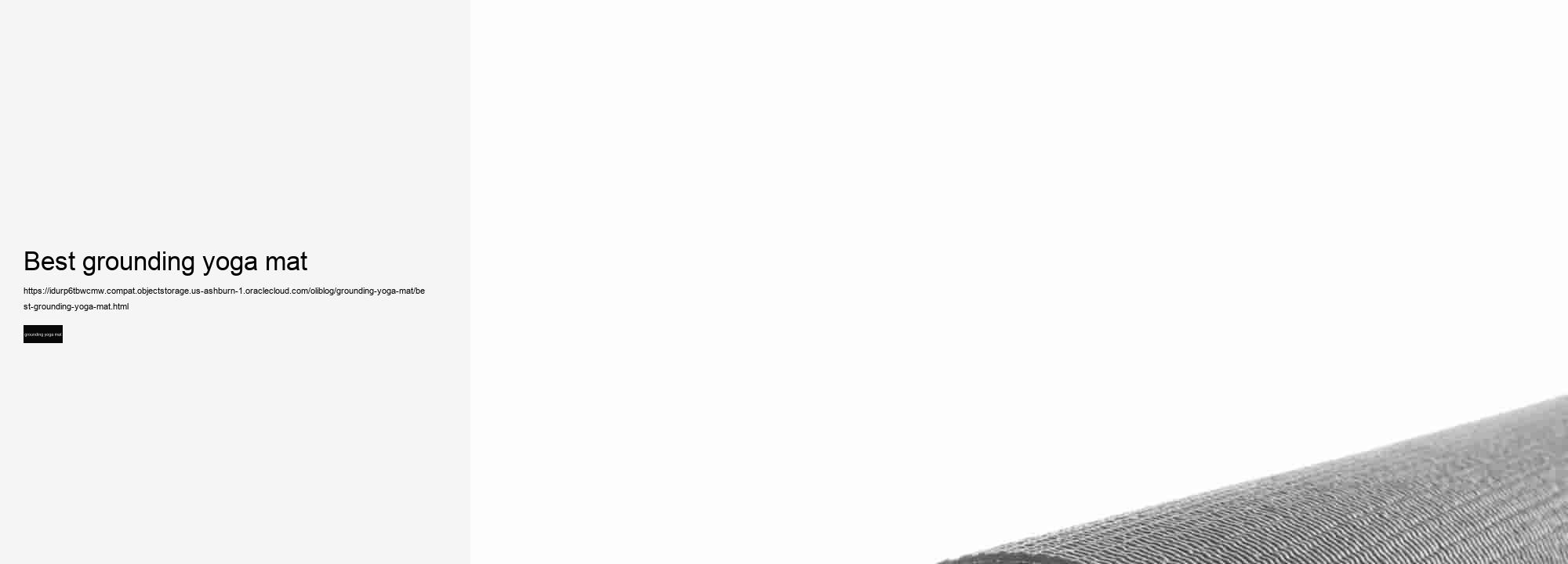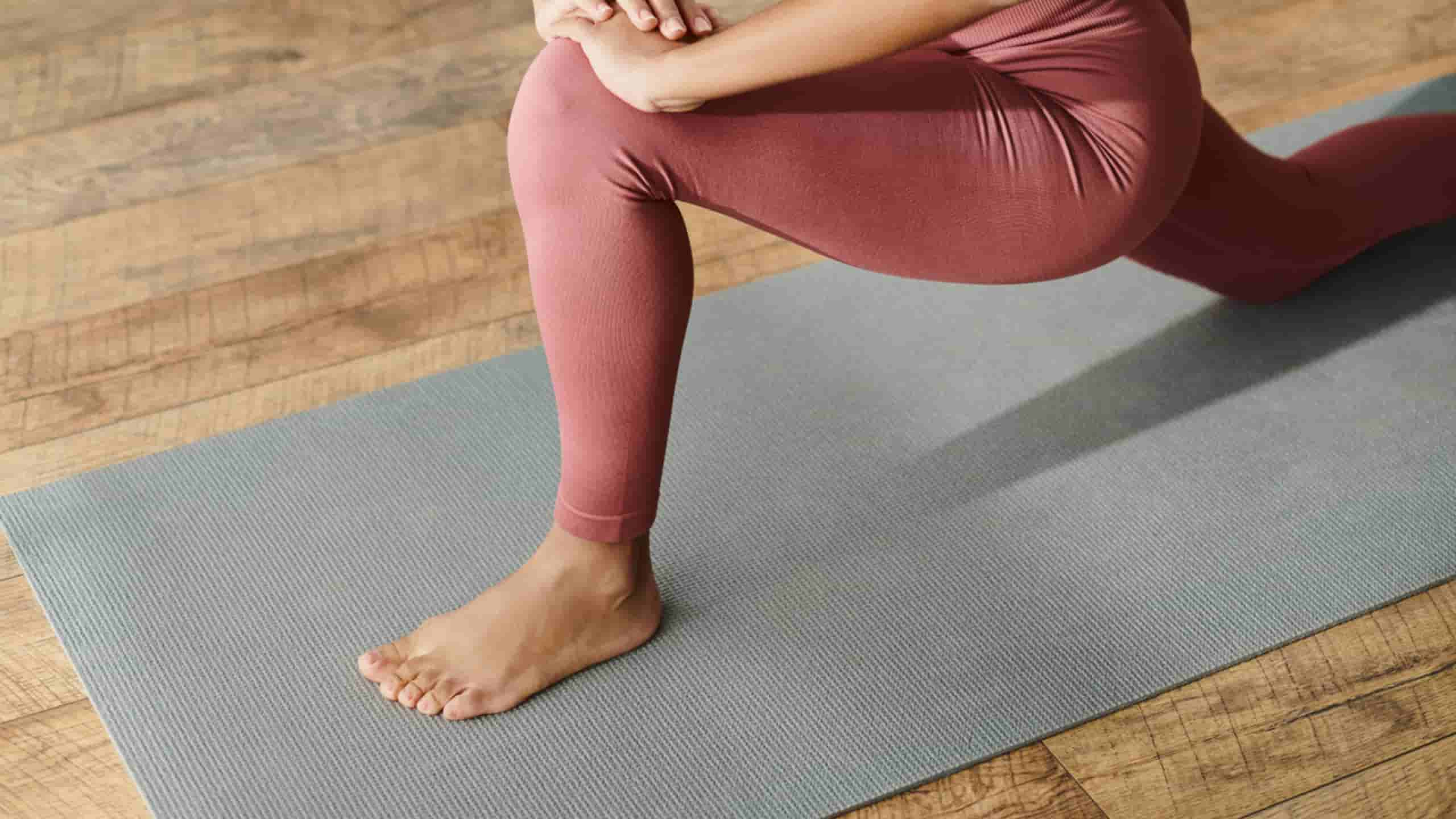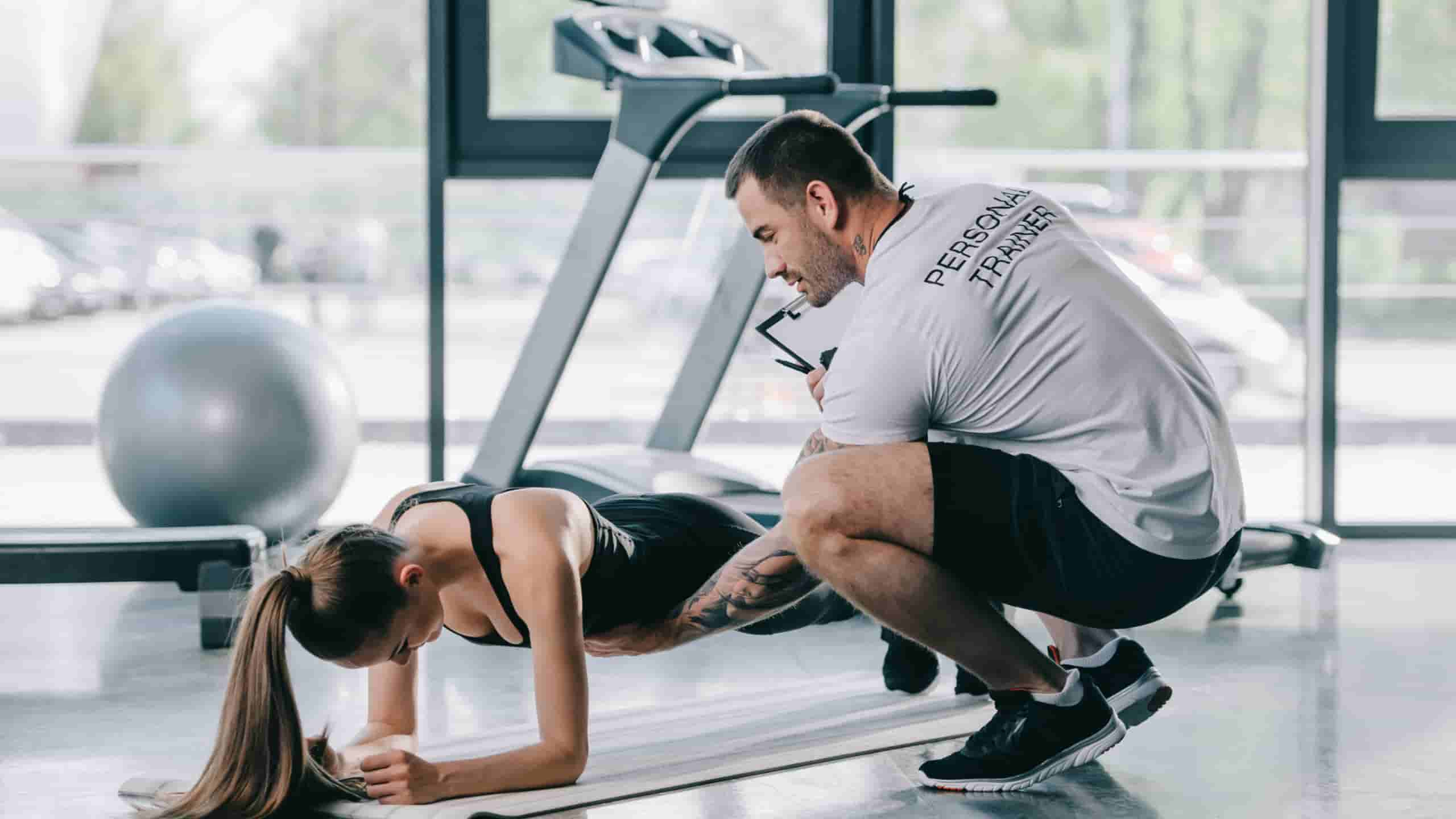

Furthermore, grounding ourselves in nature through yoga practice can have a calming and centering effect on both the mind and body. This connection to the earth can help reduce stress, anxiety, and distractions, allowing practitioners to experience a sense of peace and tranquility throughout their practice. What are some tips for properly caring for and maintaining a grounding yoga mat? To properly care for and maintain a grounding yoga mat, there are some important tips to keep in mind. Regular Cleaning: It is essential to regularly clean your grounding yoga mat to prevent the buildup of sweat, dirt, and bacteria.
Avoid Harsh Chemicals: When cleaning your grounding yoga mat, make sure to avoid using harsh chemicals that could damage the material. Opt for natural cleaning solutions that are safe for both you and the environment. Proper Storage: To maintain the integrity of your grounding yoga mat, it is important to store it properly when not in use. Roll up your mat loosely with the top side facing outwards to prevent creases or damage.
It is best to store your mat in a cool, dry place away from direct sunlight when not in use. Rotate Your Mat: To ensure even wear and tear on your grounding yoga mat, consider rotating it regularly during practice sessions. This can help prevent certain areas from becoming more worn than others. How to choose the best grounding yoga mat for your practiceWhen it comes to choosing the best grounding yoga mat for your practice, there are a few key factors to consider.
Material: One of the most important factors to consider when choosing a grounding yoga mat is the material. Look for mats made from natural materials like rubber or jute, as these materials offer excellent grip and durability. Avoid mats made from synthetic materials like PVC, as they can be slippery and may not provide the same level of grounding support. Thickness: The thickness of your yoga mat can also impact its grounding properties.
Thicker mats offer more cushioning and support, which can be beneficial for those with joint pain or sensitive knees. However, thicker mats may not provide the same level of stability and connection to the earth as thinner mats. Consider your own comfort level and needs when choosing the thickness of your grounding yoga mat. Texture: The texture of your yoga mat can also affect its grounding abilities. Mats with a textured surface provide better grip and traction, helping you stay stable during poses. Look for mats with a non-slip surface or raised patterns that promote stability and connection to the earth.
A larger mat provides more space to move freely during your practice, while a smaller mat may be more portable and easier to store. Consider where you will be practicing most often – at home or in a studio – when choosing the size of your grounding yoga mat. Price: Finally, consider your budget when choosing a grounding yoga mat. While high-end mats made from premium materials may offer superior performance, there are also affordable options available that still provide excellent grip and stability. Invest in a quality grounding yoga mat that meets your needs without breaking the bank.
Follow these tips to keep your mat in top condition:Regular Cleaning:To prevent the buildup of dirt, sweat, and bacteria on your grounding yoga mat, it is important to clean it regularly. After each use, wipe down the mat with a damp cloth or a gentle yoga mat cleaner. Allow the mat to air dry completely before rolling it up for storage. Deep Cleaning:In addition to regular wipe downs, it is recommended to deep clean your grounding yoga mat at least once a month. You can do this by soaking the mat in a bathtub filled with warm water and mild soap.
Drying:After cleaning your grounding yoga mat, make sure to dry it completely before using it again. Lay the mat flat on a towel or hang it over a railing in a well-ventilated area. Avoid exposing the mat to direct sunlight for extended periods of time as this can cause damage. Storage:When not in use, store your grounding yoga mat in a cool, dry place away from direct sunlight and heat sources. Rolling the mat loosely instead of tightly will help prevent creases and prolong its lifespan.
Avoid storing the mat in closed spaces like gym bags or closets where moisture can accumulate. Maintenance:Regularly inspect your grounding yoga mat for signs of wear and tear such as peeling edges or thinning areas. If you notice any damage, consider repairing or replacing the mat to maintain its functionality and safety during practice. By following these simple maintenance tips, you can enjoy using your grounding yoga mat for years to come.
A grounding yoga mat can help you achieve this by providing a stable foundation to support your body in various postures. Here are some tips on how to use a grounding yoga mat for balance and stability in poses:Start by placing the yoga mat on a flat surface: Before you begin your practice, make sure to lay the grounding yoga mat on a flat surface. This will ensure that the mat stays in place during your movements, preventing any slips or slides that could lead to injury.

Engage your core muscles: To enhance your balance and stability while using a grounding yoga mat, engage your core muscles throughout your practice. This will help you maintain proper alignment and control of your body as you move through different poses. Focus on your breath: Another key aspect of using a grounding yoga mat for balance and stability is focusing on your breath. By taking deep, mindful breaths, you can calm your mind and center yourself, which can improve your overall balance and stability in poses. Use props for support: If you're struggling with balance in certain poses, don't be afraid to use props like blocks or straps for added support. These tools can help you maintain proper alignment and stability while using a grounding yoga mat.
This connection with the earth can help stabilize your body and improve balance in challenging postures. Practice regularly: Like any skill, improving balance and stability with a grounding yoga mat takes practice. Make it a habit to incorporate balancing poses into your regular practice routine to build strength, flexibility, and coordination over time. How to enhance your meditation practice with a grounding yoga matGrounding yoga mats can be a valuable tool to enhance your meditation practice. These specially designed mats help you connect with the earth's energy, providing a sense of stability and grounding during your meditation sessions.
Look for mats made from natural materials like rubber or cork, as they offer better conductivity and grounding properties. Avoid synthetic materials that may disrupt the flow of energy. Practice mindfulness while setting up your mat for meditation. Take a moment to center yourself and focus on your intention for the practice. Visualize yourself connecting with the earth through the mat, allowing its grounding energy to support you throughout your session.
Poses like Mountain Pose (Tadasana) and Tree Pose (Vrksasana) can help you feel more rooted and stable, enhancing the overall effectiveness of your meditation. Focus on your breath as you settle into your meditation posture on the grounding yoga mat. Use deep, intentional breaths to anchor yourself in the present moment and create a sense of calm within. Let go of any distractions or worries, allowing yourself to fully immerse in the practice. Engage all five senses during meditation on a grounding yoga mat.
Notice how the texture of the mat feels beneath you, listen to any sounds in your environment, observe any scents in the air, taste any lingering flavors in your mouth, and pay attention to any sights around you. This sensory awareness can heighten your experience and deepen your connection with the earth. After completing your meditation practice on a grounding yoga mat, take a moment to express gratitude for this time of self-care and introspection. Reflect on how using a grounding mat has enhanced your practice and consider incorporating it into future sessions for continued support and stability.
These specially designed mats are made with materials that help to ground the body and connect it with the Earth's energy, enhancing the overall experience of the practice. Here are some ways in which using a grounding yoga mat can help improve your energy flow. Enhanced Connection with Mother Earth: Grounding yoga mats are made with materials like natural rubber or cork that have grounding properties.
This can help you feel more grounded, centered, and balanced during your practice. Improved Stability and Balance: The grounding effect of these mats can also help improve your stability and balance during yoga poses. When you feel connected to the Earth's energy through your mat, you may find it easier to hold poses for longer periods of time and maintain proper alignment.

This increased stability can lead to a more effective practice and reduce the risk of injuries. Increased Relaxation and Stress Relief: Practicing on a grounding yoga mat can also promote feelings of relaxation and stress relief. The calming effect of being connected to the Earth's energy can help quiet the mind and reduce anxiety levels, allowing you to fully immerse yourself in your practice. This enhanced sense of relaxation can lead to a deeper connection with yourself and a greater sense of well-being.
As you practice on these mats, they can absorb any negative energies or blockages in your system, helping to cleanse and purify your energetic field. Additionally, being connected to the Earth's energy through your mat can help recharge your own energy reserves, leaving you feeling refreshed and revitalized after each session. How to incorporate grounding techniques into your yoga practice using a matGrounding techniques are essential in yoga practice to help connect with the earth and stay present in the moment.
Begin by choosing a quality grounding yoga mat that provides a stable foundation for your practice. Look for mats made from natural materials like cork or jute, as they offer better grip and support compared to synthetic materials. A grounding mat should feel sturdy underfoot and provide a sense of security as you move through different poses.
Close your eyes and focus on feeling the support of the earth beneath you. Imagine roots growing from your feet into the ground, anchoring you in place and helping you feel stable and grounded. As you move through different poses on your grounding yoga mat, pay attention to how each posture feels in your body.
Notice any areas of tension or discomfort, and use the stability of the mat to adjust your alignment and find a more balanced position. Allow yourself to sink into each pose with confidence, knowing that you are supported by the earth below. Incorporate grounding techniques like visualization or mindfulness exercises into your practice to deepen your connection with the earth. Imagine yourself surrounded by a bubble of light that extends down into the ground, connecting you with the energy of the earth below. Focus on staying present in each moment and allow yourself to let go of any distractions or worries that may arise during your practice.
Stay connected to the earth beneath you, embrace each pose with confidence, and allow yourself to fully experience all that yoga has to offer. How to connect with the earth through your grounding yoga matConnecting with the earth through your grounding yoga mat can enhance your practice and deepen your connection to the present moment. First, take a moment to set an intention for your practice. Before stepping onto your mat, close your eyes and visualize yourself connecting with the energy of the earth.

To use an earthing yoga mat, simply connect it to a grounded outlet using the provided cord. Then, practice yoga as you normally would, ensuring that your bare skin touches the mat for optimal grounding effects.
Yes, you can use a grounding yoga mat outdoors, but it may not be necessary. Practicing barefoot on natural surfaces like grass, soil, or sand provides grounding naturally. However, the mat may offer additional comfort and stability.
You can test whether your grounding yoga mat is working using a continuity tester or by simply noticing improvements in your well-being, such as better sleep or reduced stress after consistent use.